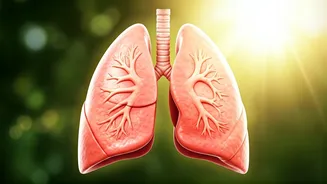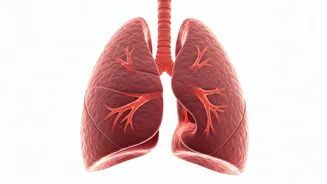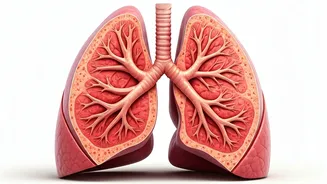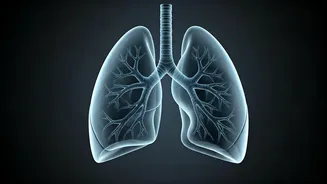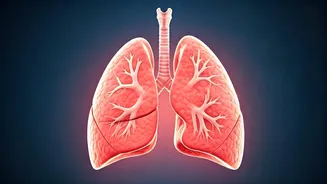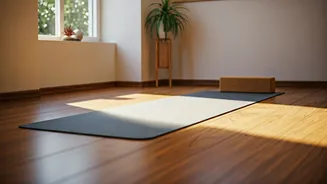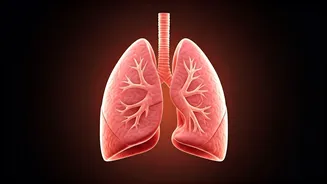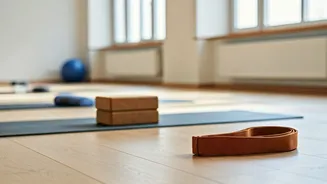Diwali & Air Quality
Diwali, the festival of lights, is a time of joy and celebration. However, it's also associated with a significant increase in air pollution, particularly
in urban areas. The burning of firecrackers and the release of pollutants from various sources contribute to a noticeable decline in air quality. This poor air quality can exacerbate respiratory issues, making it difficult for people, especially those with pre-existing conditions, to breathe comfortably. Understanding the impact of Diwali on air quality is crucial for taking proactive steps to protect your respiratory health and enjoy a safer festive season. Implementing yoga practices can significantly mitigate the negative effects of pollution during this time.
Tadasana (Mountain Pose)
Tadasana, or the Mountain Pose, serves as a fundamental yoga posture, providing a stable foundation for the practice. To perform Tadasana, begin by standing with your feet firmly planted on the ground, either together or hip-width apart. Ensure your weight is evenly distributed across both feet. Engage your leg muscles, drawing the kneecaps upwards. Lengthen your spine by lifting your chest and gently drawing your shoulders back and down. Keep your arms relaxed at your sides, with your palms facing forward. Breathe deeply and evenly, focusing on the natural rhythm of your breath. Tadasana enhances awareness of your body alignment and encourages deep, mindful breathing, which is crucial for lung health. This pose helps improve posture and increases lung capacity by promoting deep, diaphragmatic breaths, thereby assisting in better oxygen intake and reducing the impact of air pollutants.
Urdhva Hastasana (Raised Arms)
Urdhva Hastasana, or the Raised Arms Pose, is an extension of Tadasana, designed to further open the chest and expand lung capacity. Start in Tadasana, then inhale and raise your arms overhead, either parallel to each other or with your palms touching. Gently stretch your spine upwards, avoiding excessive arching in your lower back. Maintain a comfortable posture with your shoulders relaxed and your gaze directed forward. Breathe deeply, feeling the stretch in your chest and upper back. This pose encourages full, deep breaths, increasing oxygen intake and promoting better blood circulation. Urdhva Hastasana is particularly beneficial during periods of poor air quality as it helps counter the negative effects of pollutants by maximizing the oxygen supply to your lungs and body. Practicing this pose regularly helps strengthen respiratory muscles, improving lung function.
Trikonasana (Triangle Pose)
Trikonasana, or the Triangle Pose, offers a gentle twist that can benefit the lungs and enhance breathing. Begin by standing with your feet wide apart, about 3 to 4 feet. Turn your right foot outwards, about 90 degrees, and your left foot slightly inwards. Extend your arms out to the sides at shoulder height, palms facing down. Inhale deeply, and as you exhale, bend to your right, reaching your right hand towards your shin or the floor. Keep your left arm extended towards the sky, and turn your gaze upwards, if comfortable. Maintain a straight line from your shoulders to your extended hands. Breathe deeply, feeling the stretch in your side and chest. Trikonasana helps open the chest, improving oxygen flow and facilitating deeper breathing. The twist also helps remove toxins by stimulating the internal organs, contributing to overall well-being. This pose is a great way to relieve congestion and ease breathing issues caused by pollution.
Bhujangasana (Cobra Pose)
Bhujangasana, or the Cobra Pose, is a back-bending asana that expands the chest and stimulates the lungs. Lie on your stomach with your hands placed under your shoulders, elbows close to your body. Inhale and slowly lift your head, chest, and abdomen off the ground, keeping your pubic bone pressed on the floor. Engage your back muscles and gently arch your spine, looking upwards. Ensure your shoulders are relaxed and away from your ears. Breathe deeply into your chest, feeling the expansion. Bhujangasana stimulates the lungs and improves blood circulation, facilitating the removal of stagnant air and toxins. The pose is particularly helpful in improving lung capacity and combating respiratory distress. Doing this pose helps strengthen the spine while promoting deeper breathing, making it an excellent exercise for those exposed to polluted air.
Anulom Vilom (Alternate Nostril)
Anulom Vilom, or Alternate Nostril Breathing, is a powerful breathing exercise (pranayama) that cleanses the respiratory system and balances the flow of energy. Sit in a comfortable position, such as Padmasana (Lotus Pose) or Sukhasana (Easy Pose). Close your right nostril with your right thumb and inhale slowly through your left nostril. Then, close your left nostril with your ring finger and release your thumb, exhaling slowly through your right nostril. Inhale through the right nostril, and then close it with your thumb, releasing your ring finger and exhaling through your left nostril. Continue this pattern, maintaining a steady, even breath. Anulom Vilom helps clear the nasal passages and improves oxygen flow, promoting relaxation and reducing stress. The practice balances the nervous system and is highly effective in counteracting the adverse effects of air pollution on the lungs, leading to healthier and more efficient breathing during the festival.
